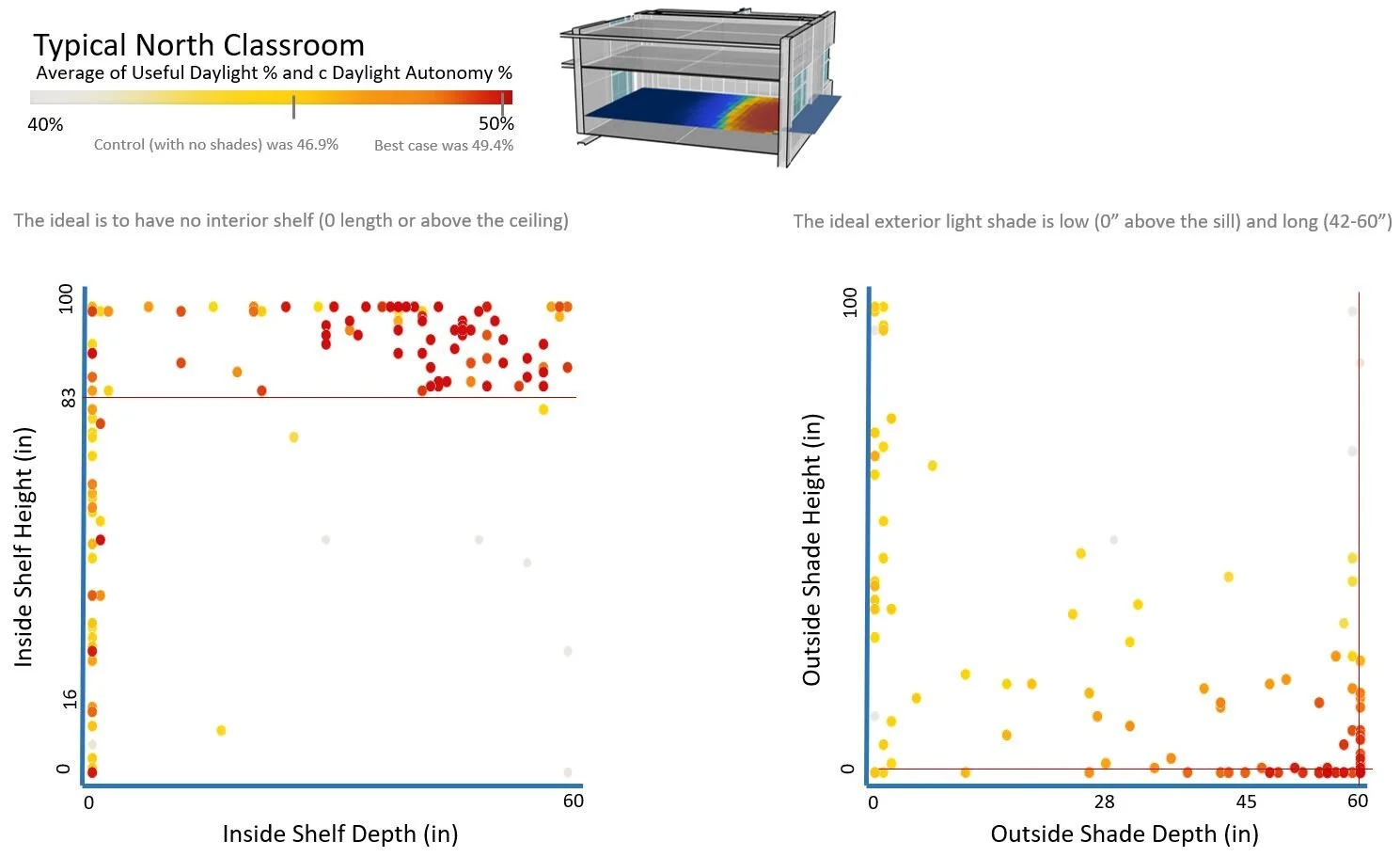There are many design problems in architecture that lend themselves to parametric modeling. If a design can be defined by a few parameters (such as the height and depth of a light shelf), and evaluated with a few performance criteria (such as the useful daylight index of the room), then the design may be a good candidate for a parametric model. When these parameters are changed, the model instantly updates. A benefit of this setup is that a designer can use an optimization algorithm to discover the best possible combination of parameters to achieve a performance goal.
In this case, the parameters are the height and depth of both an interior light shelf and an external shade for a few different classrooms in a school in Houston. The performance criteria is an average of continuous daylight autonomy (cDA: the percentage of time the room is above 300 lux) and useful daylight index (UDI: the percentage of time the room is between 200 and 2,000 lux). This is a good balance of getting enough light to work with, while mitigating glare.
There are several types of optimization algorithms, such as genetic algorithms, simulated annealing, CMA-ES, and RBFOpt. Different types of algorithms have their own benefits. In this process, we are using the RBFOpt algorithm, because it is best at arriving at a good result with as few iterations as possible. This is important because each iteration of a daylight model may take several minutes. To find a reasonable solution quickly, we only have time to run about 20 or 30 iterations for each problem. I’m using DIVA for daylight modeling and Opossum 2.0; a Grasshopper component that runs RBFOpt and CMA-ES optimization algorithms.
This is one of several similar classrooms that have a south facing window and relatively low ceilings. The average daylight performance (an average of UDI and cDA) is about 46.9% with no interior light shelf or external shade. After several dozen iterations, the best possible result was to have no interior light shelf and a long and low exterior light shelf. Because the room is relatively dark to begin with, there was no benefit of adding any shade; only a large external shelf at sill height to bounce light upward into the space. Each dot on the scatter plots above represents an iteration of the daylight model, each of which takes a few minutes to run.
This is a typical classroom on another wing of the school. The baseline here is much brighter, about 79.3%, so this solution has to optimize for both bouncing light and reducing glare. The ideal result was to have a long and low interior light shelf, and a shallow and high external shade. The most optimal design had a performance of 84.6%.
The previous results show the best possible configuration of light shelves, regardless of practical constraints like design or cost. In case those results are too impractical, this follow up model finds the best length of an interior and exterior shelf, assuming both are at a fixed height on the mullion. In this case, the best result for the first classroom is to have a very shallow shelf, 4 inches inside and out. The best case for the second classroom was to have a 23" inch interior shelf with a 56” exterior shelf.


